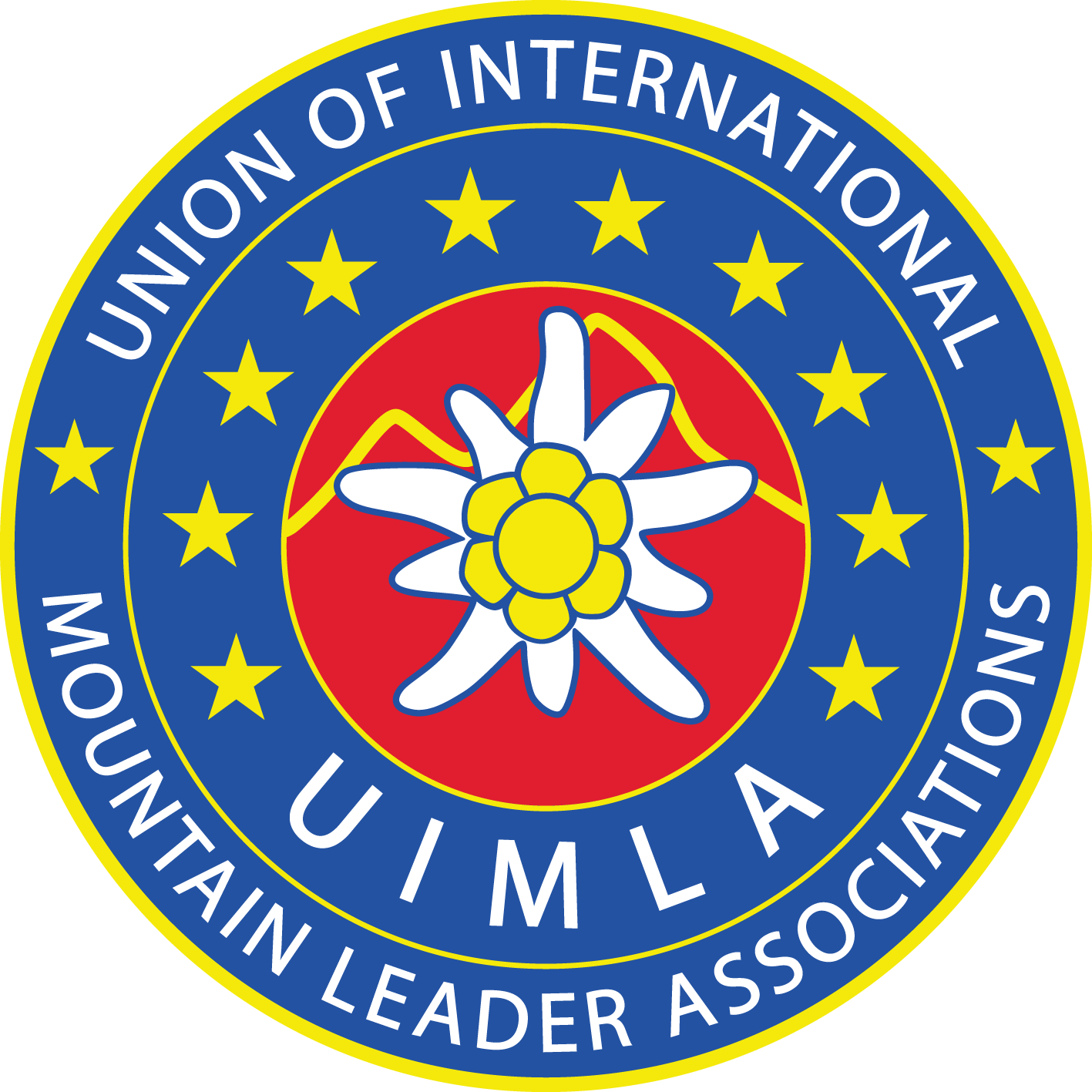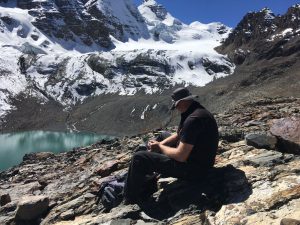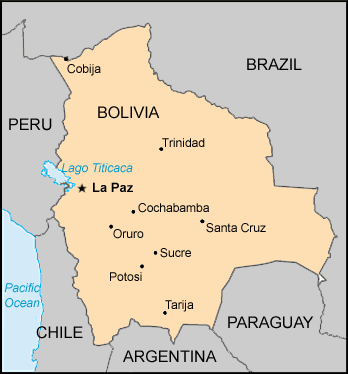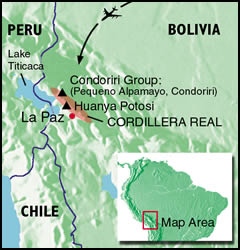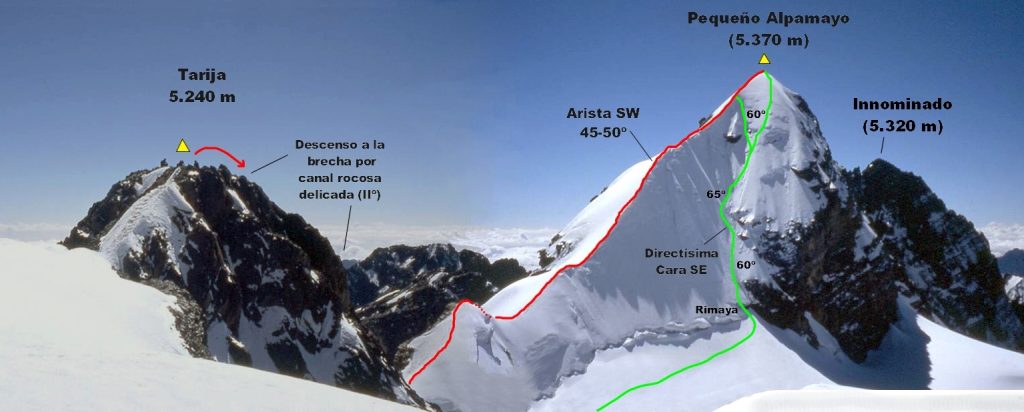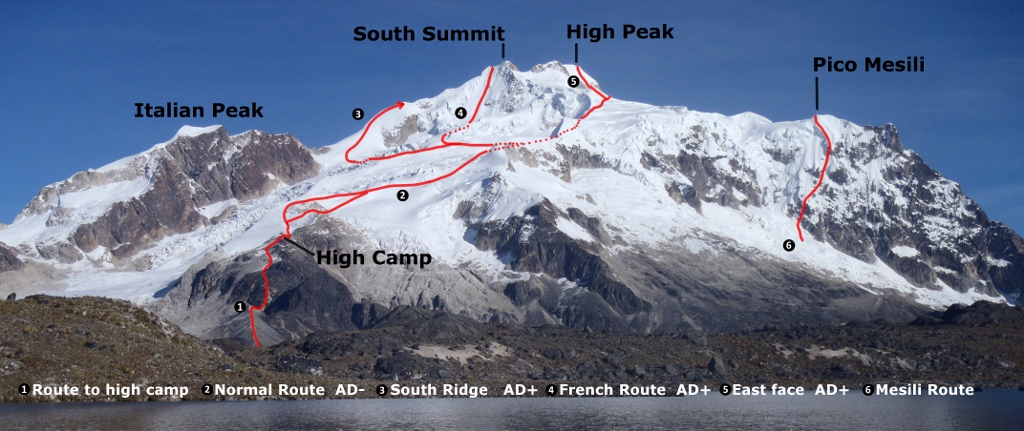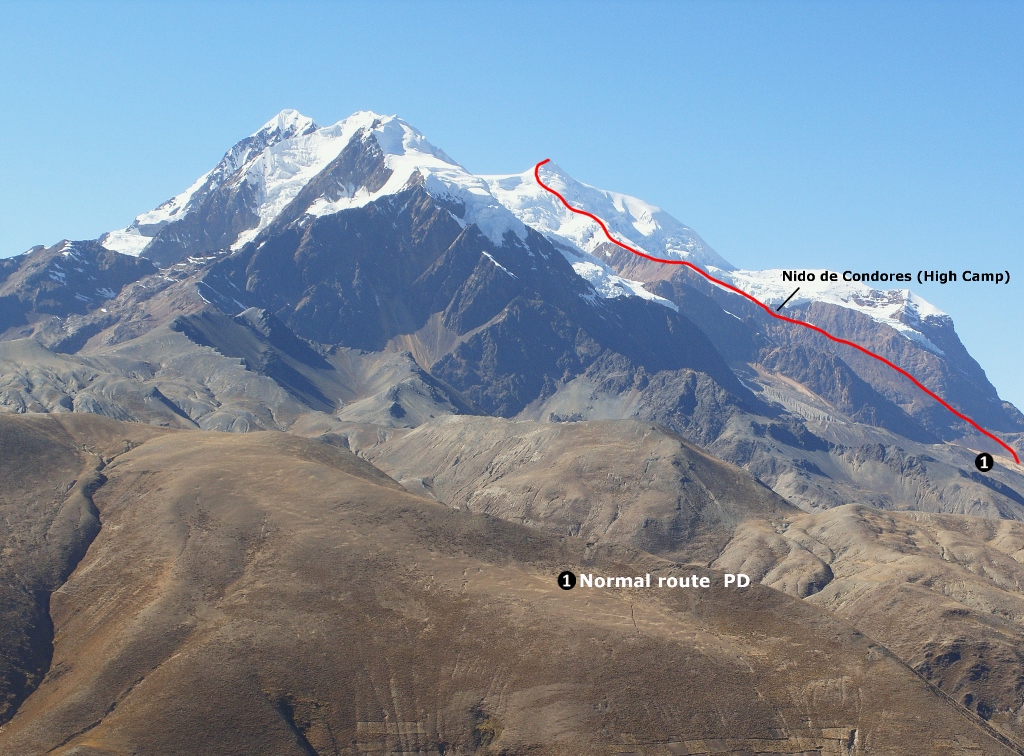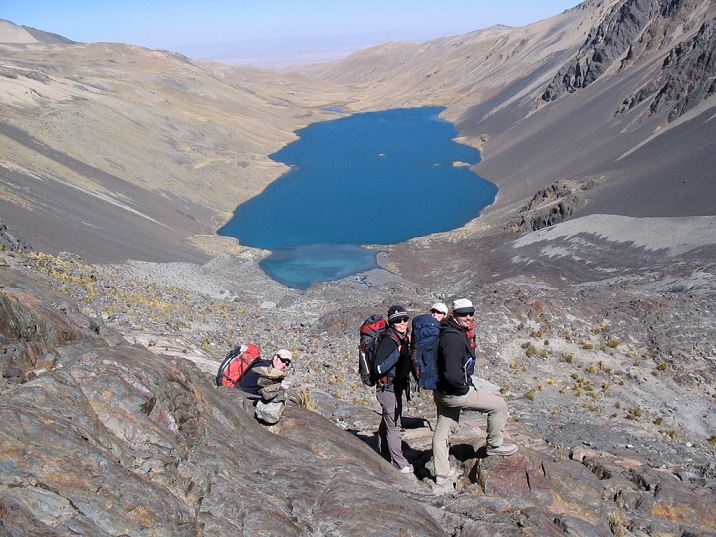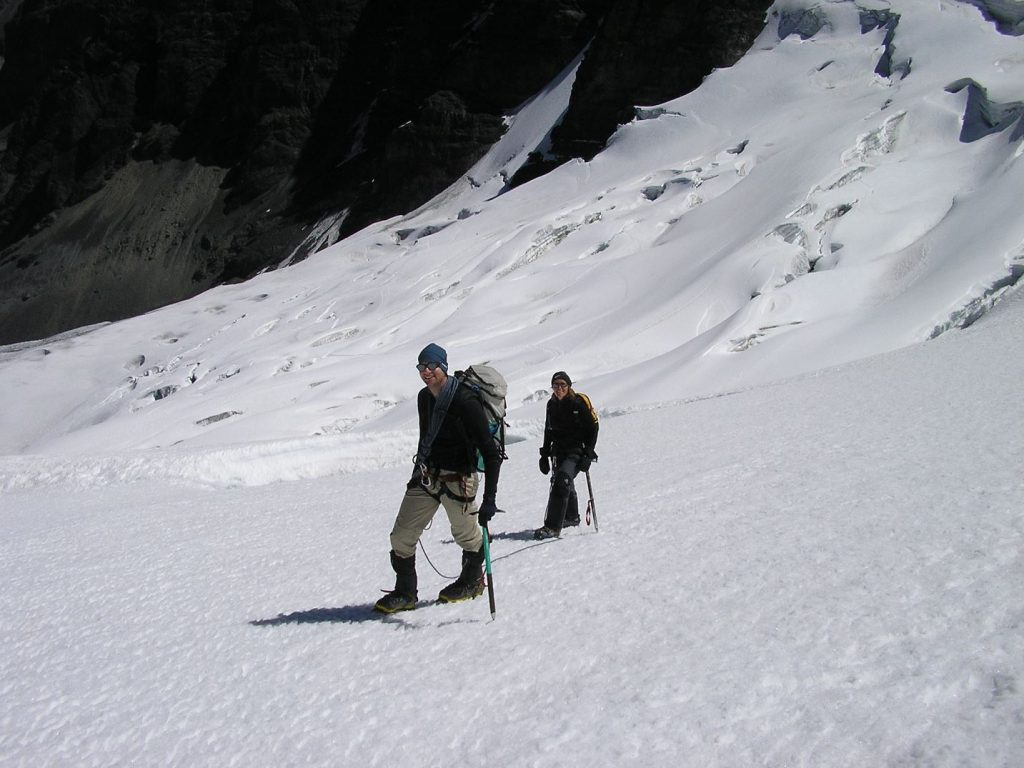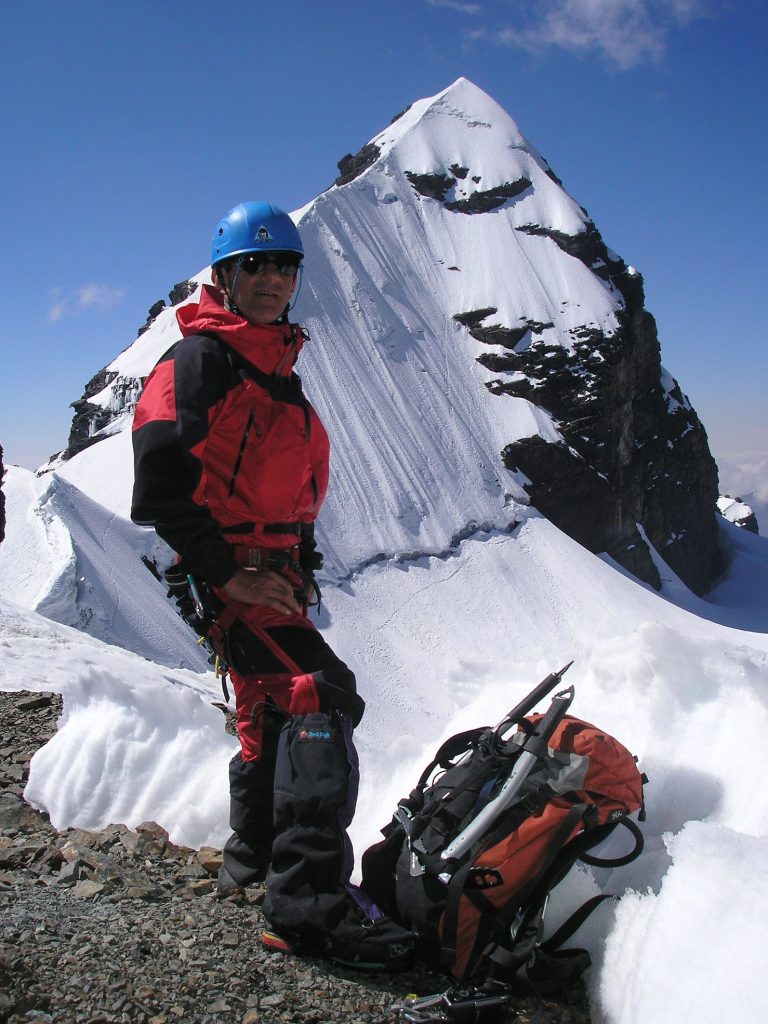
Bolivian Cordillera Real - Pequeno Alpamayo, 5329m and Huayna Potosi, 6088m
This trip is a superb introduction to mountaineering in Latin America. We tackle two peaks that are both respectable and popular mountaineering objectives, plus the option to climb a harder peak called Illimani for an additional week in Bolivia. It is quite a strenuous trip demanding fitness and experience camping outdoors, however we will be using mules and some base camp facilities along the way.
Overview
This trip is a superb introduction to mountaineering in Latin America. We tackle two peaks that are both respectable and popular mountaineering objectives, plus the option to climb a harder peak called Illimani for an additional week in Bolivia. It is quite a strenuous trip demanding fitness and experience camping outdoors, however we will be using mules and some base camp facilities along the way. There will always be one guide to three clients when climbing on the rope.
The climbing averages PD+/AD (Scottish II) and does require confidence, experience on snow and ice and knowledgable use of crampons and ice axe. It is also required that members have experience of roped travel on glaciated terrain and steep ground. We will be asking applicants to send us some details of their climbing experience before acceptance onto this trip.
We fly in to La Paz in Bolivia at 4000m but we do recommend that if you have time you may wish to arrive even earlier to get used to the altitude. It is definitely a very high starting point for a mountain trip.
Start point La Paz (3627m) surrounded by glaciated peaks and rolling hills. Minimum two days acclimatising and visiting Lake Titicaca and the reed islands.
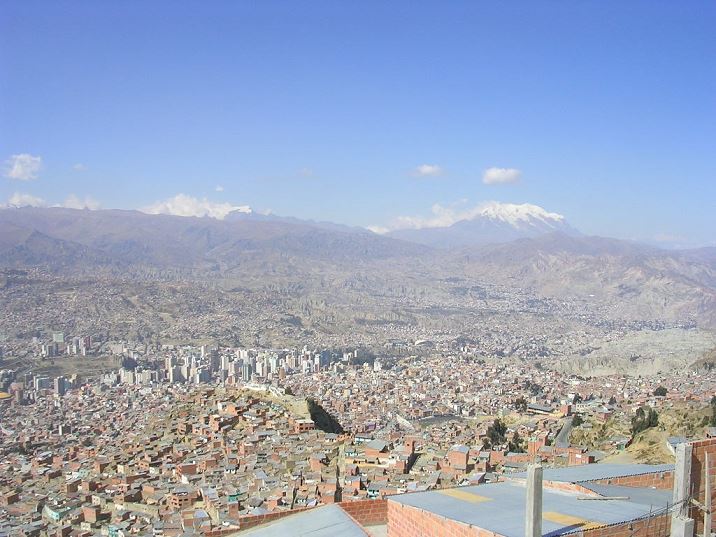
Pequeno Alpamayo (17,482 feet/ 5329m) climb is technical yet reasonable (AD). Ideal place to increase your mountaineering skills. 5 days practicing glacier and climbing skills, acclimatizing, climbing sub-peaks, and finally making our summit bid. The summit day consists of a moderate glacier, followed by two pitches of fourth class rock, and then steep ice or neve on a knife-edged ridge. After our team makes its summit bid, we will trek onto the next peak.
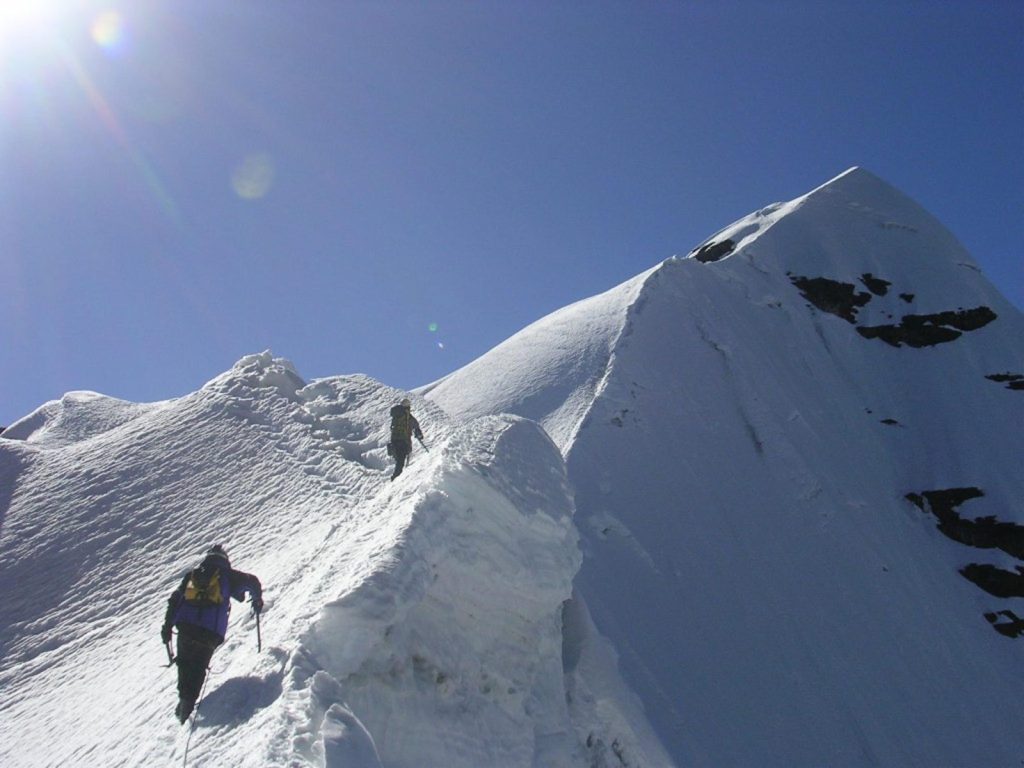
Huayna Potosi (19,975 feet 6088m, AD) is a short drive from La Paz to the base camp. Spend a day practicing steeper ice climbing skills on the glacier’s edge. Summit day route is comprised of steep glacier travel and a final airy ridge to the summit. A summit of Huayna is excellent preparation for longer routes on the big mountains of the world.
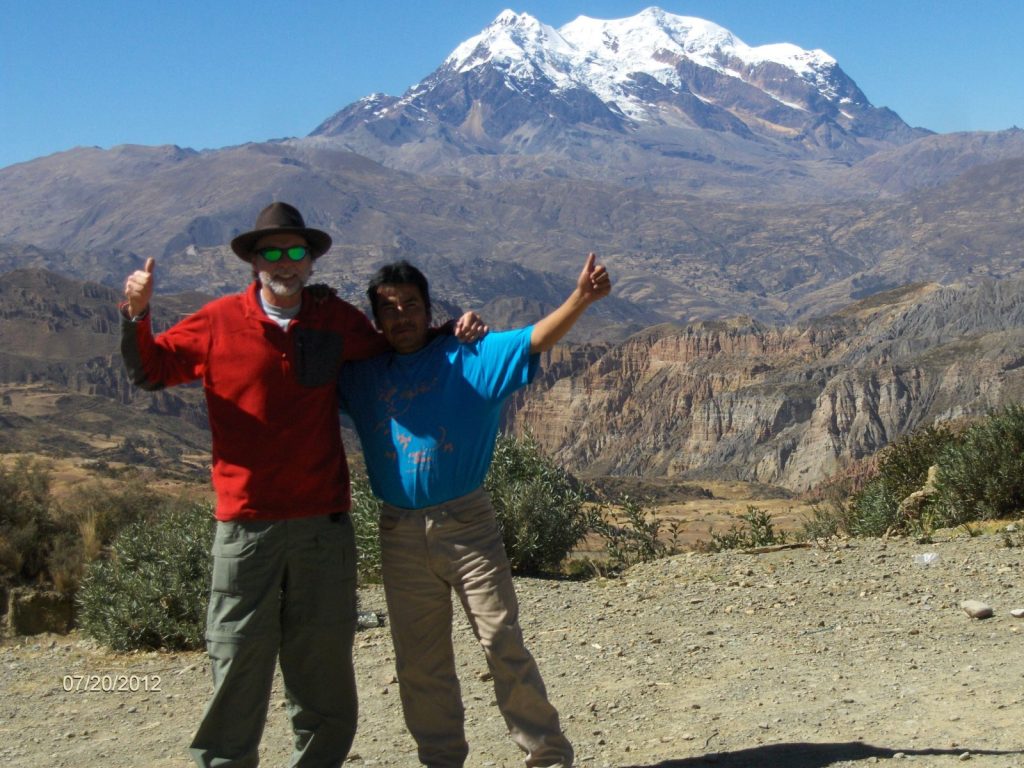
Optional third peak of Illimani (21,125 feet/6,439 meters), tallest in the Cordillera Real and graded a PD climb. After a beautiful approach through Bolivian farmland and small indigenous towns, arrive at base camp and move to high camp known as Nido de Condores at 18,372 feet (5,600 meters). Summit day takes us across an exposed ridge and then onto broad snow slopes, around crevasse fields, and eventually onto the final, classic, knife-edged summit ridge which can involve 55° ice climbing at an altitude of nearly 6,000m.
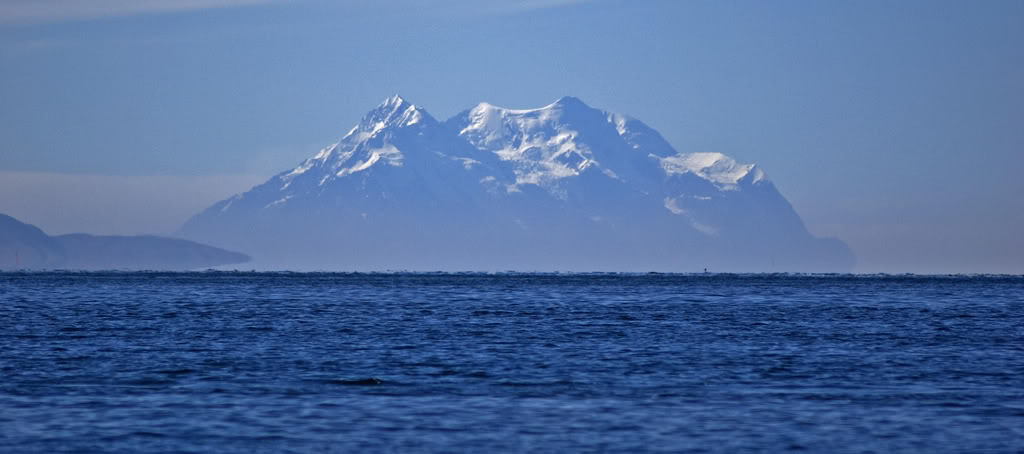
What Our Adventurers Think:
Brilliant trip, really sound guides, great food – got all 3 peaks done as well as 3 extra – got a day mountain biking on death road fitted in on rest day just to add to adrenaline rush! Beautiful country and really lovely people – one of the best trips so far; despite some of the peaks being at the more technical end of things I never felt under any pressure due to the guides being so competent and relaxed. Well done to Jon, Jose, Andreas and all the support team, a cracking trip all round!
Huayna Potosi and Pequeno Alpamayo itinerary
The main trip is 15 days in-country. Add a day at either end for flights which will make it 17 days in total. However, feel free to arrive a day or so early or leave a day or so later.
If you would like to climb Illimani as well then the trip is 21 days in country, or 23 days with flight time.
Flights
The airport in La Paz is called El Alto International Airport. Its code is LPB(IATA) or SLLP(ICAO) It is located 8 mi (13 km) south west of La Paz city. Common routes from the UK are via European and then South American hubs, such as Amsterdam & Lima, Madrid & Santiago, Madrid & Bogota etc
Arrive in La Paz at 4000m, transfer to hotel in the heart of the city at 3,650m, it is important to take it gently for the day. There is the chance to visit the attractions of the city, including the notorious Witches Market, colonial museums and perhaps even the coca museum.
Continuing our acclimatisation, we drive out into the altiplano to visit the ancient site of Tihuanaco, an extremely significant pre-Inca civilisation. Continue to Copacabana on the shores of Lake Titicaca (3,800m).
Motor boat onto the Island of the Sun for a three hour trek across the island, enjoying the panorama of the Cordillera Real and Cordillera Apolobamba ranges in the distance.
2-3 hour drive from Lake Titicaca to Kâotia, where our mules will be waiting. Starting at 4200m, we follow the foothills of the Cordillera Real until we reach the valley of Ajuani. Camp at 4300m
Cross two passes of around 4800m before descending into the Juri Khota valley, and camp on the shores of the Lake with the same name (4300m)
Cross the Austria pass (5100m) passing magnificent hanging glaciers and glacial lakes before descending into Condoriri valley (4600m) after climbing Pico Austria at 5250m.
A skills practise day today at the base of the glacier.
Summit attempt of Pequeno Alpamayo (5,350m). Departing around 4am, trek to the glacier, first few hours, the gradient remains relatively consistent at around 30 degrees until we reach the saddle of the Tarija peak at 5,300m which is an ideal vantage point to see the final route to the summit of Pequeno Alpamayo (about 1 hour further). The final section is a little steeper (up to 45 degrees) until we reach the summit. Descend the same way.
Spare day. Or break camp and continue our trek along the range, and make our way to the base of Maria Lloco (4,500m). Camp
Trek to Maria Lloco camp or the Huayna base camp at 4,700m. Camp.
Rest day
| A short trek today to the high camp for acclimatisation and training (5,150m) at the edge of the glacier. Or move to high camp for sleeping. |
Early start (around 1am) to aim to reach the summit for sunrise. We step onto the glacier almost immediately, with the majority of the route being a glacial walk, with a couple of small crevasses to negotiate. Or camping at high camp for summit next day
Summit day or spare day or return to La Paz
Return to La Paz, depart home or stay
Ready for an Adventure of a Lifetime?
Choose a scheduled date or contact us to set up private dates or a bespoke itinerary. The minimum deposit is £100.00 and the balance is due four weeks before travel.
Fixed Itineraries
No upcoming trips found.

